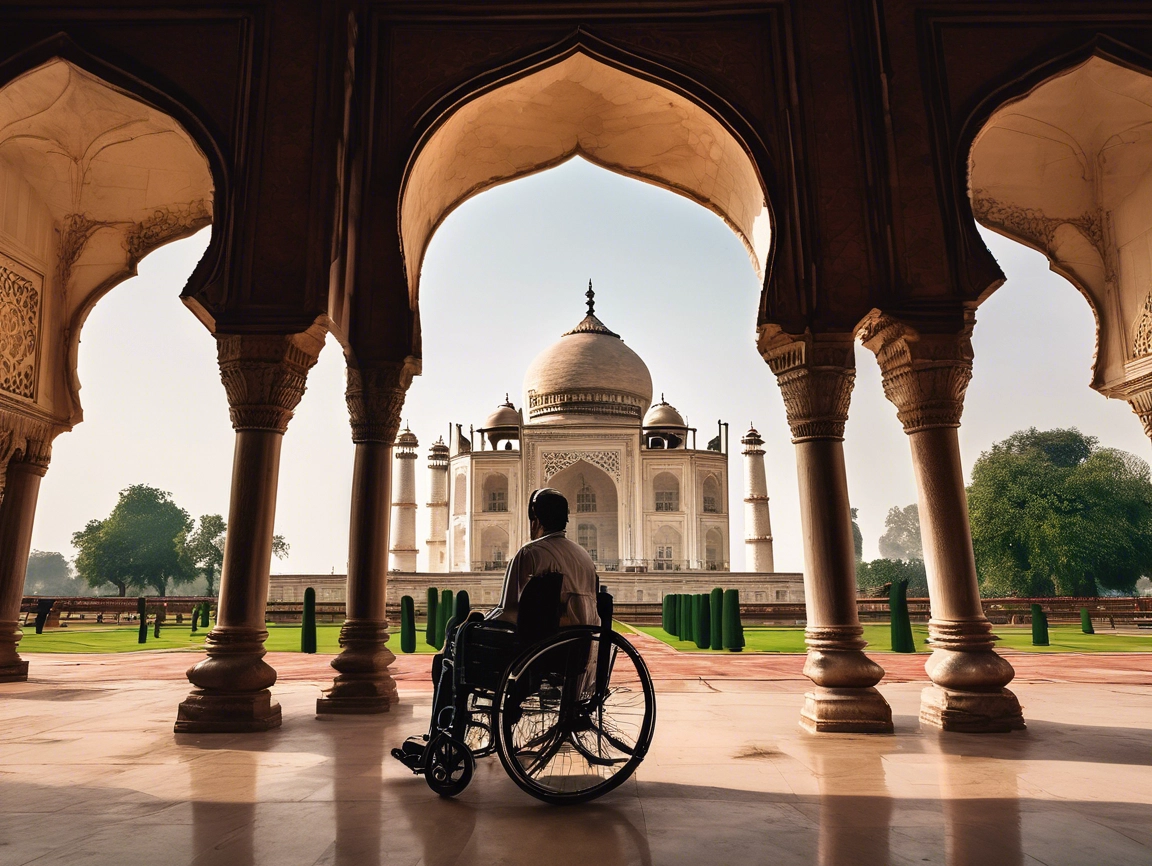
My Accessible Travel Experience to the Taj Mahal & Agra Fort – By Anshuli Singhal
Hi, I’m someone who has been living with Limb-Girdle Muscular Dystrophy (LGMD 2A) for over 15 years. I rely on a wheelchair during my travels, and I love exploring India’s beautiful cultural heritage—while also helping fellow wheelchair users understand what to expect at popular destinations. In this blog, I’m sharing my experience of exploring Agra in a wheelchair, home to the iconic Taj Mahal and the magnificent Agra Fort.
Travel to Agra
We traveled from Lucknow to Agra by private car, which gave us flexibility and comfort throughout the journey. The drive is smooth and scenic, making it a great option for those who prefer to travel at their own pace, especially with accessibility needs in mind.
Where I Stayed
We stayed at the Taj Hotel and Convention Centre, Agra.
It’s a highly recommended hotel for wheelchair users—spacious rooms, accessible entrances, and supportive staff. However, Agra also offers several budget-friendly accommodations, and some of them may have basic accessibility features. If you’re booking online, make sure to call the hotel in advance to confirm wheelchair-friendly facilities.
Visiting the Taj Mahal in a Wheelchair
The Taj Mahal is one of the most wheelchair-accessible monuments I’ve visited so far. The government has done an excellent job ensuring inclusivity in the experience.
From Parking to Entry
-
- From the parking area, golf carts are available to take you close to the Taj premises.
-
- Near the drop-off point, you’ll find private wheelchair vendors offering manual wheelchairs with a puller/assistant to help you navigate the grounds.
-
- Charges are typically around ₹500, and the helpers are quite familiar with the layout and tourist flow.
Inside the Taj Mahal
-
- Almost all areas of the Taj Mahal complex are equipped with ramps and slopes, making it easy to move around in a wheelchair or even with electric wheelchairs.
-
- The main sanctum area, where the tombs are, is not wheelchair accessible due to a flight of stairs. However, the rest of the complex is very accessible, and you can enjoy the stunning view of the monument from the beautifully maintained gardens and platforms.
Big shoutout to the Archaeological Survey of India and other authorities for the thoughtful accessibility planning here.
Exploring Agra Fort in a Wheelchair
Just like the Taj, Agra Fort is also quite wheelchair-friendly.
-
- You’ll find private wheelchair pullers outside who will quote you around ₹500—though I highly recommend negotiating, as the prices can be inflated for tourists.
-
- The fort has slopes built throughout most of the key areas, so wheelchair users can explore large parts of the fort with ease.
-
- Some sections that are at a higher elevation may not be accessible, but that doesn’t take away from the grandeur and history of the place.
-
- It’s absolutely worth a visit to get a feel of how the Mughals lived—a truly majestic experience.
Tips for Wheelchair Users in Agra
-
- Crowds: Weekends and cooler months bring big crowds, but both Taj Mahal and Agra Fort are open and spacious, so it doesn’t feel overwhelming even during busy hours.
-
- Tickets & Guides:
- Ticket counters are well organized.
-
- Licensed guides have fixed prices, but many guides near parking areas overcharge. Wait until you’re closer to the entrance where prices are more reasonable.
- Tickets & Guides:
-
- Wheelchair Pullers:
-
- At both monuments, private services are available. Carry some cash and always negotiate.
-
- Wheelchair Pullers:
-
- Food & Drinks:
- Cold drinks and food are not allowed inside the Taj Mahal. Only water bottles are permitted.
-
- After your visit, there are many eateries outside the monuments where you can enjoy local snacks and meals.
- Food & Drinks:
Other Experiences & Recommendations
-
- Photography: There are many professional photographers inside both the Taj Mahal and Agra Fort. They usually offer printed copies or digital transfers on the spot—worth considering for a memorable keepsake.
-
- Shopping: While we didn’t do a lot of shopping this time, Agra is famous for marble handicrafts, leather goods, and souvenirs—you’ll find shops near the Taj entrance and in the main markets.
Final Thoughts
Agra surprised me with how thoughtfully accessible it is. From the historical richness of the Taj Mahal to the royal charm of Agra Fort, I could experience most of it comfortably in a wheelchair. If you’re a traveler with limited mobility or traveling with someone who has a disability, exploring Agra in a wheelchair is absolutely doable and enjoyable with just a bit of planning.
